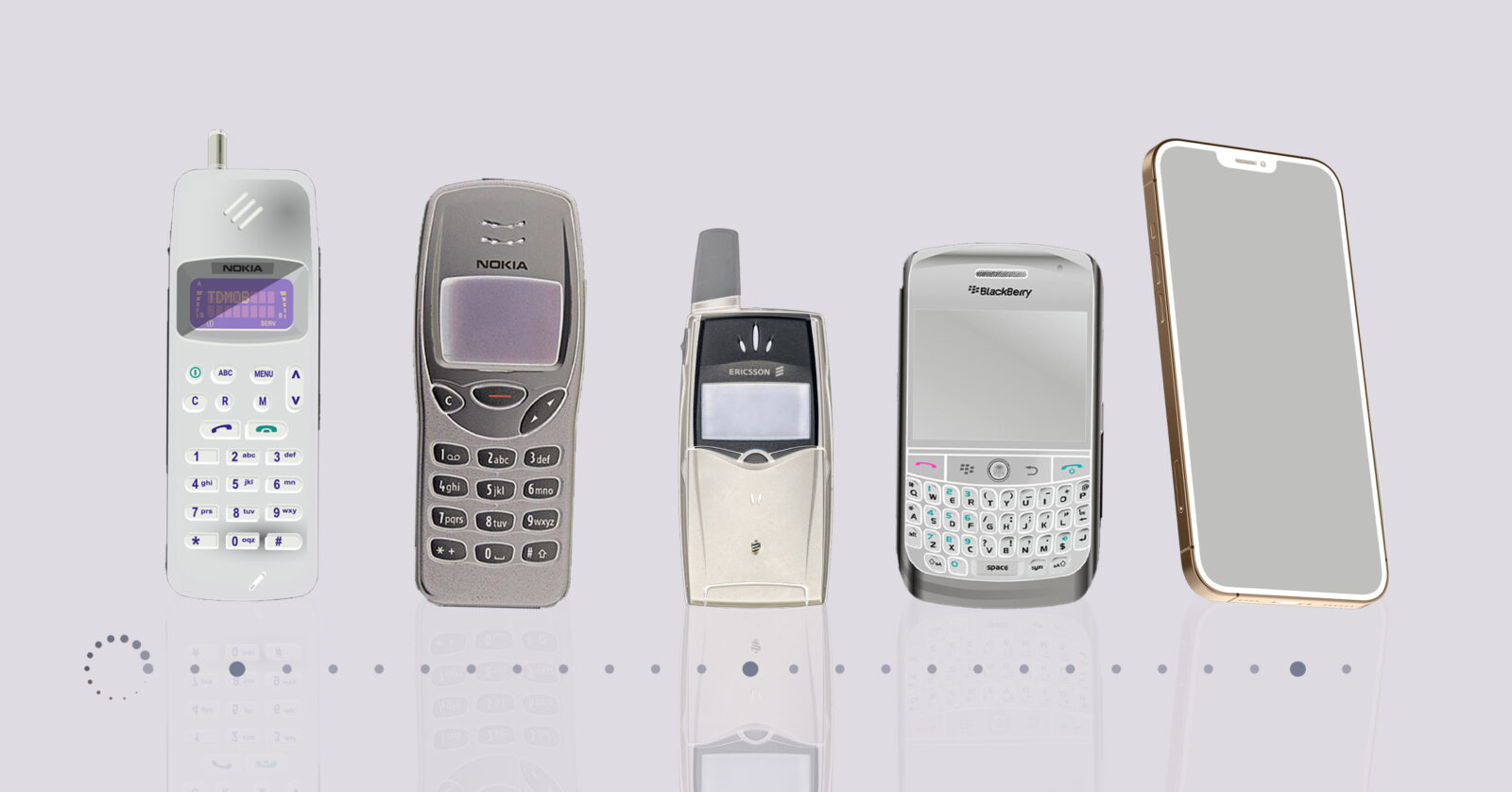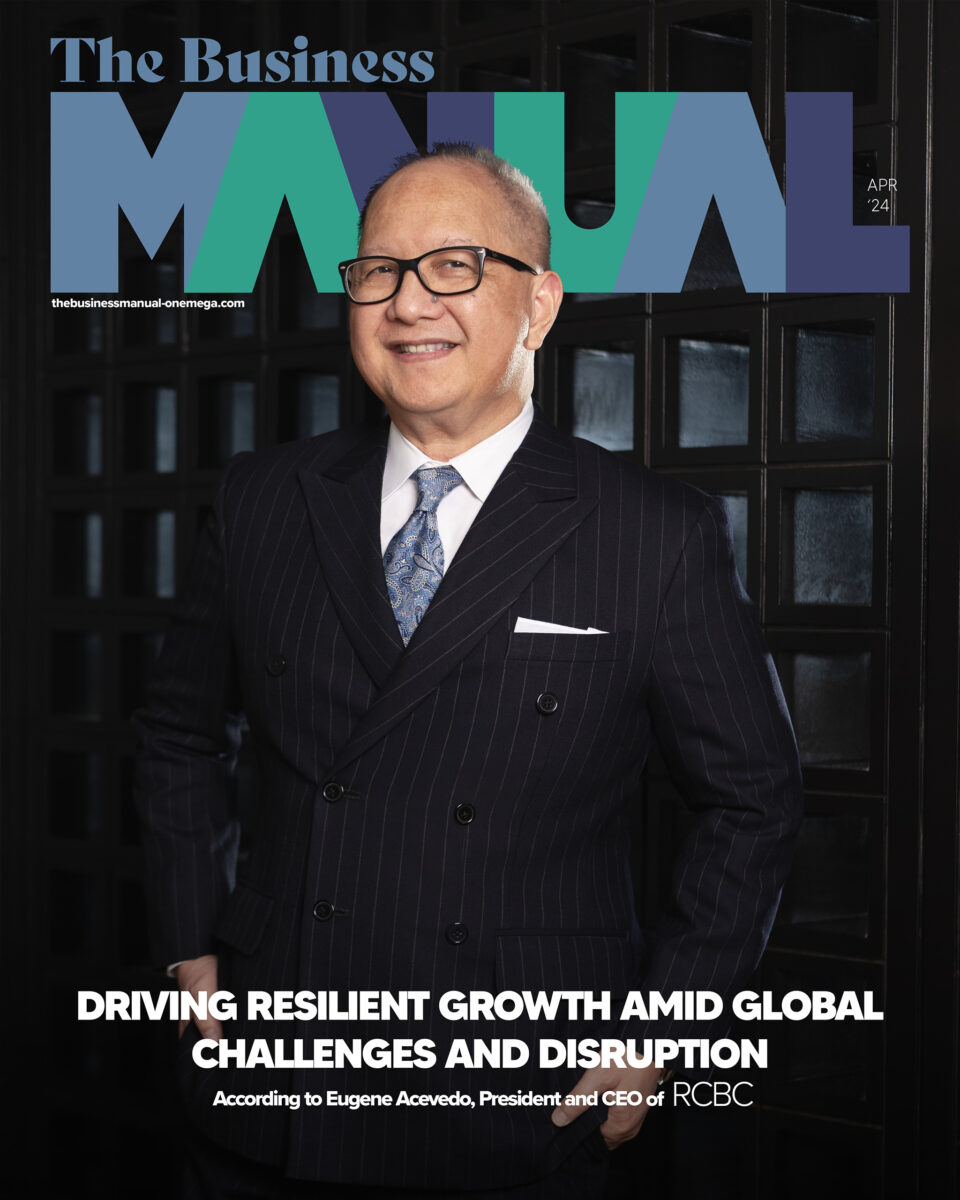5 Ways the Evolution of Mobile Phones Shaped the Way We Do Business

From phones with call and text features to smartphones that let you answer emails and check spreadsheets, mobile phones have changed our lives and the way we do business.
While it may seem like smartphones were around all our lives, believe it or not, it has been 16 years since Apple founder Steve Jobs introduced the first iPhone to the world. “An iPod, a phone, and [an] internet communicator. An iPod, a phone, are you getting it?” he said back then.
He even famously said, “Today, Apple is going to reinvent the phone.” And more than a decade later, it cannot be denied that he was right.
Gone are the days when we relied solely on telephones, pagers, and fax machines. Today, a handy device that fits inside your pocket can let you make calls, send messages, and even do video calls. And that, is a smartphone.
Smartphones and mobile phones in general have changed the way we communicate from a distance with one another. It has also changed and shaped the way people do business today. Here’s how.
The First Portable Cell Phone
Smartphones had to start out somewhere, and in this case, the portable cell phone—a device with the simplest, most basic functions—is its ancestor.
Widely considered the first hand-held device or the first portable cell phone, the Motorola DynaTAC was invented in 1973, but it was not until 1983 that the commercial service started. In fact, the phone itself was around 2.3 lbs in weight and nine inches in height! You could only talk on the phone for a total of 30 minutes despite the fact people spent 10 hours charging it.
Although it can be a hassle to bring around in this day in age, in the 70s and 80s, the cellphone was already a very big thing, as communication back then was heavily dependent on landlines, pagers, and payphones. And even with those, it was hard to reach people who were in different places.
Short messages could be passed on between offices and business associates through this device, instead of people having to make the trip to another location just to say a few words. Calls could be made and received on the go, lessening delays and other complications with scheduling a face-to-face meeting.
The Motorola DynaTAC may not be as compact as the smartphones of today, but it was portable, which meant it could be brought anywhere and helped people become more time-efficient.
Call and Text
Fast forward to the 90s when people got to enjoy a new feature that came with mobile phones: text messaging.
While the first text message was sent from a computer to a mobile phone in 1992, people had to wait for a year before the first mobile phone that could send texts made its debut—thanks to Nokia. It had a limit, however, since only people on the same network could send and receive text messages, as it was free at that time.
It wasn’t until 1999 that people could finally text family and friends on other networks.
Just like how the Motorola DynaTAC freed people from the confines of staying in one location with a landline to receive or make calls, such was the case when text messaging was added to mobile phones. Being able to send a text to employees, clients, and other people meant that written notes and letters and even face-to-face conversations and meetings were not the only way to send a message. This again highlights the time efficiency aspect that mobile phones bring.
This also gave rise to SMS marketing, which is much cheaper and more convenient than telemarketing campaigns. In fact, data says as of 2022, 70% of consumers are subscribed to SMS marketing.
The BlackBerry
If there is one phone that has been strongly associated with businessmen and executives, it’s the BlackBerry. Launched in 1999, this smartphone—known for its QWERTY keypad—had 85 million subscribers around the world by 2011. In 2012, more than 200 companies in the US still used BlackBerry phones, despite the growing number of iPhones and Android devices.
Why did people, particularly businessmen, love the BlackBerry so much? It has a lot to do with speed, security, and privacy.
As people who value time and hate it when it’s wasted, businessmen and company executives appreciated the speed and efficiency that comes with using a BlackBerry. BlackBerry’s push email was seen as convenient as work emails arrived automatically, and the QWERTY keypad was ideal for fast typing, which can be difficult to do on touchscreen number keyboards that take time and sometimes do not respond well to finger presses.
Businessmen also valued the better security that BlackBerry devices offered. BlackBerry devices typically forced users to utilize complex passwords, which is very important in keeping a device safe from hacking. BlackBerry devices also didn’t offer that many apps and services the way iPhones and Android devices do, which limited the sharing of personal info to app creators.
Multi-Purpose Smartphones
Alas, the BlackBerry eventually bowed out of the competition as “the legacy services for BlackBerry 7.1 OS and earlier, BlackBerry 10 software, BlackBerry PlayBook OS 2.1 and earlier versions, will no longer be available after January 4, 2022,” according to the official company statement.
Furthermore, the company added that BlackBerry is shifting to become a software company instead. This might not come as a surprise, given that iPhones and Android devices have dominated the market in the last few years.
Today’s smartphones have become very multi-purpose—which allows for easier integration in doing business. Beyond the standard text and call features, the creation of mobile apps has allowed businessmen and employees to view and edit spreadsheets, presentations, and documents on their mobile devices. People can also send and receive emails, schedule meetings, and appointments, and even put their e-signatures on documents with just a few taps.
Many e-commerce apps have likewise been created in the past few years, which allow people to buy, sell, and even trade products using their phones.
The smartphones’ video call and video conferencing capabilities have also proven very useful in business, which became very evident when lockdowns were imposed at the height of the COVID-19 pandemic. In fact, many seem to prefer video conferencing as 87% of workers have said they feel more connected to their teams via video.
What’s more, the variety of apps available in app stores has made it possible to do business anywhere and anytime.
Are AI Phones the Future?
Mobile devices have come a long way through the years and it goes without saying that they will continue evolving as time goes by. In fact, people who are looking at the future of mobile phones see that artificial intelligence (AI) will play a huge role.
And with the age of digitalization, the advent of AI has already begun—that is, with AI-powered smartphones in the market today! Many phone models already support voice assistants, such as Alexa and Google Assistant, which have been useful and convenient for the busiest people.
How? You can literally tell your phone to schedule appointments or even make purchases without having to type it down. And your phone can even remind you about them, too!
Facial recognition is also another AI-powered feature that many smartphones are already offering. Seen widely as an effort to keep apps and devices more secure, many companies, such as banks, opt to have a facial recognition security feature.
Despite the advancements related to AI that have already been made, it is safe to say that there is still much about it that phone manufacturers do not understand and have not explored. As technology continues to evolve in years to come, so will AI and its integration with smartphones. And with all these changes imminent, who knows how the business scene and the very behavior of people will change.




